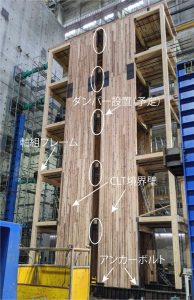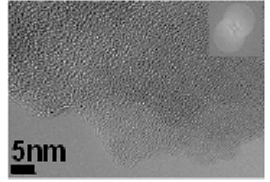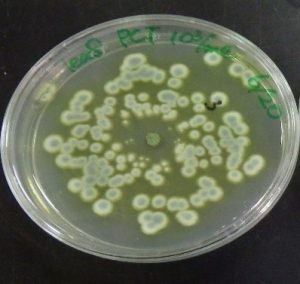2019 Activity Report for Mission 4: Development and Utilization of Wood-based Sustainable Materials in Harmony with the Human Living Environment
Updated: 2020/05/12
受賞
Journal of Wood Science The Japan Wood Research Society Best Paper Award
Makiko Imai, Asako Mihashi, Tomoya Imai, Satoshi Kimura, Tomohiko Matsuzawa, Katsuro Yaoi, Nozomu Shibata, Hiroshi Kakeshita, Kazuaki Igarashi, Yoshinori Kobayashi and Junji Sugiyama”Selective fluorescence labeling: time-lapse enzyme visualization during sugarcane hydrolysis”
Journal of Wood Science volume 65 (17)
Research 1: Innovation of timber structure
Principal Investigator (PI): Hiroshi Isoda (RISH, Kyoto University)
Research collaborator(s): Takafumi Nakagawa (RISH, Kyoto University), Akihisa Kitamori, Rui Li, Daiki Kinugasa (RISH, Kyoto University), Takuro Mori (Hiroshima University), Yasuhiro Araki (National Institute for Land and Infrastructure Management), Shoich Nakashima(Building Research Institute)
Based on the research for mechanical characteristics of new wooden materials such as cross laminated timber (CLT), we will develop new timber joints and construction system, and evaluate its structural performance which will contribute to the establishment of a sustainable society. We will also promote research on the composite structural members and buildings that combine wooden materials and wooden structures with other materials and structures in order to propose new developments in the use of wood.
- Study on seismic resistance performance and fireproof system on CLT shear panel infilled in steel frame buildings
- Real-sized static loading test for coupled shear wall system using CLT continuous wall with damping system
Publications, etc.
- Dot Corporation and RISH Kyoto University “Report of Research and Development on Steel Frame with CLT infill structural system”, 2020. 03 (in Japanese)
Research 2: Quantitative morphology of woody plants
Principal Investigator (PI): Junji Sugiyama (RISH, Kyoto University)
Research collaborator(s): Kayoko Kobayashi (Tokyo University), Nakajima Takeshi, Yusuke Kita, Suyako Tazuru, Tomoya Imai(RISH, Kyoto University),
Optical micrograph databases of domestic hardwood samples registered in Xylarium, RISH, Kyoto University, were published to promote open-science in wood science field from the Kyoto University Research Repository (KURENAI)1). Analyses of Fagaceae database provided new insights, where the structural features detected by machine learning had common trends with DNA based dendrogram, and more interestingly, phylogenetically closely rerated but structurally very distinct subgenera, Ilex and Ceris, had particularly similar feature in latewood vessel arrangement2). In addition, there were some more anatomical findings: Lauraceae database was successfully classified by BOF models3,4) and structurally similar cypress wood was distinguished by CNN model5,6). Moreover, time-laps observation of enzymatic degradation of sugarcane bagasse was quantified and the action and possible function of cocktail enzymes was first unveiled, which was awarded as the best paper in 2019 of the Journal of Wood Science7).
Publications, etc.
-
- Junji Sugiyama, Junji Sugiyama et al.シ Xylarium Digital Database for wood information science and education (XDD _01ス16), https://repository.kulib.kyoto-u.ac.jp/dspace/handle/2433/250016
- Kobayashi K, Kegasa T, Hwang S-W, Sugiyama J: Anatomical features of Fagaceae wood statistically extracted by computer vision approaches: Some relationships with evolution. PLoS ONE 14(8) e0220762 2019
- SW Hwang, Kobayashi K, Sugiyama J: Evaluation of a model using local features and a codebook for wood identification. IOP Conf. Series: Earth and Environmental Science 415(012029) (2020)
- Sung Wook Hwang, Kayoko Kobayashi, Junji Sugiyama: Detection and visualization of encoded local features as anatomical predictors in cross-sectional images of Lauraceae, Journal of Wood Science 66 16 2020
- Y Kita, S Mizuno-Tazuru, J Sugiyama, Two-dimensional microfibril angle mapping via polarization microscopy for wood classification. IOP Conf. Series: Earth and Environmental Science 415(012028) 2020
- Yusuke Kita, Graduate School of Agriculture, Kyoto University, Master Thesis (2020)
- Makiko Imai, Asako Mihashi, Tomoya Imai, Satoshi Kimura, Tomohiko Matsuzawa, Katsuro Yaoi, Nozomu Shibata, Hiroshi Kakeshita, Kazuaki Igarashi, Yoshinori Kobayashi and Junji Sugiyama. Selective fluorescence labeling: time-lapse enzyme visualization during sugarcane hydrolysis, Journal of Wood Science, Vol. 65 issue 17, 2019
Research 3: From Production to Recycling of Wood Biomass-Based Materials
Principal Investigator (PI): Kozo Kanayama (RISH, Kyoto University)
Research collaborator(s): Kenji Umemura, Soichi Tanaka (RISH, Kyoto University)
The effective usage of wood is required to produce and reuse the eco-friendly materials. Impregnation of wood with chemical liquids is one of the key techniques. This technique has been used to control the biodegradation, combustion, and dimensional stability. After the impregnation process, however, there often exist some areas in cavities without being filled with chemical liquid, leading to the inadequate control. It has been necessary for the adequate control to promote the liquid permeation to wood in impregnation process. In our work, the method to add impulsive pressure on the liquid surrounding wood was developed for penetrating the microstructure (aspirated pit) that disturbs the liquid permeation. The impulsive pressure was generated by hitting the liquid-fulfilled container in which wood was placed. The liquid permeation was clarified to be promoted by the irradiation of the impulsive pressure on wood (Alaska cedar).
Publication
- Soichi Tanaka, Masako Seki, Tsunehisa Miki, Kenji Umemura, Kozo Kanayama: Influence of pulsive pressure waves on liquid penetration into wood in semi-opened container. J. Wood Sci., 65, Art. No. 54, 1-7, 2019
Research 4: Establishment of environmentally harmonized innovative recycling system of resources in the humanosphere
Principal Investigator (PI): Tsuyoshi Yoshimura (RISH, Kyoto University)
Research collaborator(s): Toshimitsu Hata, Aya Yanagawa (RISH, Kyoto University)
Our research targets are a) to enhance the durability of wood-based materials based on fundamental researches, and b) to research and develop sustainable functional materials from wood. The present research topics are as follows:
1.Ecology, physiology, and management of wood-deteriorating organisms
The mass cultures of the wood-attacking insects have been maintained, and their feeding ecology was investigated with X-ray CT scanning etc. In addition, the in-box heat treatment was successfully applied to eradicate them. Evaluation and development of novel wood preservatives were conducted in collaboration with public/private sectors.
2.Sustainable functional materials from wood.
The effects of N-doping method and heating temperature, were investigated to obtain CO2 absorption materials from wood. Catalytic effects of N enhanced the crystallization of carbon. N-doping controlling interlayer spacing of carbon, leading to the high functionality of the materials.
3.Study of insects, plants and microbe for creating sustainable humano-habitability
Saikusa Festival is held for protection against diseases and disaster. Flowers of the Japanese bamboo lily Lilium japonicum are symbolic sacred flower for this festival, and used to be delivered to visitors after the festival. We found that the scent of the flower has an antimicrobial activity.
Publications,etc.
- I Mayumi Utsumi, Koji Murata,Kenji Umemura, Tsuyoshi Yoshimura, Kazuo Hattori and Masashi Nakamura: Mechamical properties and biological performance of particle boards made of Sendam (Melia azedarach), BioRes., 14(2), 41000-4109 (2019), Doi. 10.15376/biores.14.2.4100-4109.
- Nami Kartal, Evren Terzi and Tsuyoshi Yoshimura: Performance of fluoride and boron compounds against dry wood and subterranean termites and decay and mold fungi, J. For. Res., doi.org/10.1007/s11676-019-00939-4.
- Yoshiyuki Yanase, Yuko Fujiwara, Yoshihisa Fujii, Takuro Mori, Tsuyoshi Yoshimura and Shuichi Doi: Evaluation of particulate materials as a physical barrier agaoiknst penetration of Reticulitermes spoeratus, Mokuzai Hozon (Wood Protection), 45(3), 114-121(2019)(in Japanese with English summary)
- Saip Nami Kartal, Evren terzi, Aysel Kanturk Figen and Tsuyoshi Yoshimura: Movement of boron from ulexite and colemanaite minerals in sapwood and heartwood of Cryptomeria japonica, J. For. Res., 2019, doi: org/10.1007/s11676-019-01022-8.
- Yoko Okahisa, Chieko Narita and Tsuyoshi Yoshimura: Resistance of wood coated with oriental lacquer (urushi) against damage caused by subterranean termite, J. Wood Sci., 2019 65:41, Doi: 10.1186/s10086-019-1820-6.
- Kazushi Nakai, Moriyoshi Ishizuka, Seiichi Ohta, Jonas Timothy, Makala Jasper, Njabha M. Lyatura4, Victor Shau4 and Tsuyoshi Yoshimura: Environmental factors and wood qualities of African blackwood, Dalbergia melanoxylon, in Tanzanian Miombo natural forest, J. Wood Sci. (2019), 65:39, Doi: 10.1186/s10086-019-1818-0
- Cihat Tascioglu, Kenji Umemura, Sukma Kusuma, Coskun Kose, Mesut Yalcin, Caglar Akcay and Tsuyoshi Yoshimura: Mold and larvae resistance of wood-based composites incorporating sodium fluoride, BioResources, 15(1), 20-27 (2020). Doi: 10.15376/biores.15.1.20-27.
- Naoshi Hanasaki, Iku Iwasa, Yasuki, Takahashi, Aya Yanagawa, Shiichirou Kajiwara: Antimicrobial activities by floral scents of the Japanese bamboo lily Lilium japonicum, the symbolic flowers offered the deity at the Saikusa Festival., AROMA RESEARCH, 78(20), 41 – 47(2019) (in Japanese with English summary)
Research 5: Production and utilization of cellulose nanofibers
Principal Investigator (PI): Hiroyuki Yano (RISH, Kyoto University)
Research collaborator(s): Kentaro Abe (RISH, Kyoto University)
Cellulose nanofibers (CNFs) are a fundamental component of plant cell walls. Because of their excellent mechanical properties and their high specific surface area, we are studying the utilization of CNFs as a reinforcing filler of resin composites.
In many cases, it is necessary to modify the raw CNFs to obtain a balance between hydrophilic and hydrophobic properties, introduce functional groups, dewater, and re-disperse. Polymer grafting on the surfaces of CNFs is a particularly powerful means of guiding self-assembly and tuning the compatibility of CNFs with other materials. However, large quantities of organic solvent are used in pre-treatment, polymerization, and/or purification, which is environmentally unfriendly. Therefore, there is a demand for new polymer grafting methods that are both facile and green.
In our study, we irradiated an aqueous suspension of CNFs with ultraviolet (UV) light to generate radicals on the sur- faces of the CNFs, initiating polymer grafting. As a result, poly (methyl methacrylate) (PMMA) was readily grafted from the CNFs, without destroying the crystalline region of cellulose. PMMA-grafted CNFs show improved hydrophobicity and redispersibility in organic solvent. As well as PMMA, various other polymers can be grafted from CNFs without using organic solvents. We believe that this technique, called UV grafting, may provide a greener method for producing CNF materials with novel features.
Publications, etc.
- Sato A, Yoshimura T, Kabusaki D, Okumura H, Homma Y, Nakatsubo F, Yano H, Multi-functional effect of alkenyl-succinic-anhydride-modified microfibrillated celluloses as reinforcement and a dispersant of CaCO3 in high-density polyethylene, Cellulose 26 (11), 6641-6651, 2019
- Ito A, Semba T, Kitagawa K, Okumura H, Yano H, Cell morphologies and mechanical properties of cellulose nanofiber reinforced polypropylene foams, Journal of Cellular Plastics 55 (4), 385-400, 2019
- Biswas SK, Tanpichai S, Witayakran S, Yang X, Shams MI, Yano H, Thermally superstable cellulosic-nanorod-reinforced transparent substrates featuring microscale surface patterns, ACS Nano 13 (2), 2015-2023, 2019
- Wang L, Okada K, Hikima Y, Ohshima M, Sekiguchi T, Yano H, Effect of cellulose nanofiber (CNF) surface treatment on cellular structures and mechanical properties of polypropylene/CNF nanocomposite foams via core-back foam injection molding, Polymers 11 (2), 249, 2019
- Ishikura Y, Yano H, Microfibrillated-cellulose-reinforced polyester nanocomposites prepared by filtration and hot pressing: Bending properties and three-dimensional formability, Journal of Applied Polymer Science, 48192, 2019
- Yang X, Ku T-H, Biswas SK, Yano H, Abe K, UV grafting: Surface modification of cellulose nanofibers without the use of organic solvents, Green Chemistry 21 (17), 4619-4624, 2019
- Biswas SK, Sano H, Yang X, Tanpichai S, Shams MI, Yano H, Highly Thermal-Resilient AgNW Transparent Electrode and Optical Device on Thermomechanically Superstable Cellulose Nanorod-Reinforced Nanocomposites, Advanced Optical Materials 7 (15), 1900532, 2019







